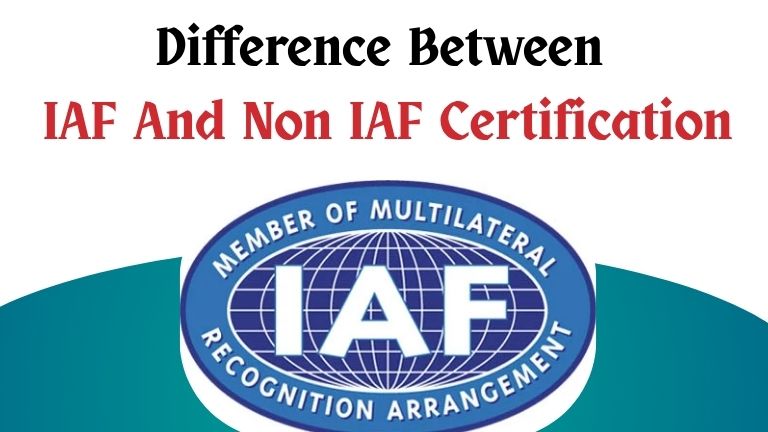The Indian Armed Forces (IAF) play a vital role in protecting our national interests and ensuring both internal and external security. When we discuss the “difference between IAF and Non IAF,” it’s crucial to grasp what these classifications mean, especially in areas like education, housing, recruitment, and documentation. This article aims to shed light on what IAF and Non-IAF are, their importance, and how they vary across different contexts.
What is IAF?
IAF stands for the Indian Air Force, which is one of the three primary branches of the Indian Armed Forces. The personnel who serve in the Indian Air Force, including officers, airmen, and civilian staff, are often grouped together as IAF personnel. The Indian Air Force is tasked with defending Indian airspace, engaging in aerial combat, and taking part in disaster relief efforts and peacekeeping missions.
What is Non IAF?
On the flip side, Non IAF refers to those who aren’t connected to the Indian Air Force. This group includes civilians, members of other military branches like the Indian Army or Indian Navy, and individuals working in government or private sectors. Non IAF is a broad term that typically represents the civilian population or anyone not directly serving in the IAF.
IAF and Non IAF Difference in Multiple Contexts
Recognizing the difference between IAF and Non IAF is essential when navigating forms, services, policies, and benefits that distinguish between these two groups. Let’s explore some areas where this distinction is commonly observed:
1. Housing and Residential Quarters
In government and defense housing programs, the difference between IAF and Non IAF is quite significant.
- IAF Personnel: Are allotted accommodation in Air Force stations or colonies. They often get priority in defense housing schemes.
- Non IAF: Civilians or personnel from other services may be eligible for housing, but the preference and entitlements differ. Access to certain air force facilities may be restricted.
2. Education and School Admissions
Many Kendriya Vidyalayas (KV), Air Force Schools, and Army Public Schools have different admission priorities.
- IAF Children: Get priority in schools run by the Air Force Education and Cultural Society.
- Non IAF: While civilian children are eligible, they often fall under later preference categories during admission.
Here, the IAF and Non IAF difference affects seat availability and fee structures in some cases.
3. Canteen and Welfare Benefits
Canteen services (CSD – Canteen Stores Department) and welfare benefits differ between IAF and non-IAF personnel.
- IAF: Active and retired members can access CSD facilities, subsidized products, and welfare schemes.
- Non IAF: Civilians are not allowed access unless they are entitled through other services like the Indian Army or Navy.
4. Recruitment and Employment Opportunities
In defense recruitment drives, there is a clear difference between IAF and Non IAF in eligibility and preferences.
- IAF Candidates: May have internal transfer or promotion opportunities within the defense sector.
- Non IAF Candidates: Need to go through open competitive exams. They are not entitled to internal defense promotions unless enrolled officially.
5. Documentation and Application Forms
Many government forms and defense-related applications include a field asking whether the applicant belongs to IAF or Non IAF.
- IAF Applicants: May be asked to produce service certificates or ID.
- Non IAF Applicants: Need to mark themselves accordingly and follow a different verification process.
This difference affects processing speed, verification channels, and applicable benefits.
6. Medical and Health Services
Hospitals under the Ministry of Defence often have different protocols for IAF and non-IAF individuals.
- IAF: Eligible for treatment in Air Force hospitals or Command Hospitals with dedicated care units.
- Non IAF: May get treatment in the same hospitals but typically through ECHS (Ex-servicemen Contributory Health Scheme) or general services, if eligible.
The IAF and Non IAF difference here reflects in the type and level of healthcare facilities accessible.
7. Pension and Retirement Benefits
Pension benefits are also structured differently.
- IAF Retirees: Get defense pensions, gratuity, and access to canteen and health services post-retirement.
- Non IAF: Civilian government employees receive pensions under CCS (Pension) Rules, 1972 or NPS (National Pension System), depending on the joining date.
Why the IAF and Non IAF Difference Matters
This distinction is mainly for administrative, security, and operational reasons. It helps organizations and institutions to:
- Allocate resources effectively
- Provide services based on eligibility
- Maintain national security protocols
- Recognize and reward defense personnel for their service
Without this classification, managing benefits and entitlements would become a tangled mess.
ALSO READ– How to Implement ISO 27001 in an Organization
Common Misconceptions About IAF and Non IAF Difference
A lot of civilians mistakenly think that IAF includes anyone associated with the government or military, but that’s not the case.
- IAF specifically refers to personnel affiliated with the Indian Air Force.
- Non-IAF encompasses everyone else, including those in the Army, Navy, paramilitary forces, or civilian government roles.
The difference between IAF and Non-IAF is more than just a matter of words; it signifies distinct career paths, benefits, responsibilities, and levels of access.
Conclusion
Grasping the difference between IAF and Non-IAF is essential, especially in situations where this classification affects access to services, benefits, or opportunities. Whether you’re filling out a form, applying to a school, or seeking government assistance, knowing your category can streamline the process and enhance accuracy. For the Indian government and its institutions, this distinction allows for better resource management and policy execution.
While both IAF and Non-IAF individuals play vital roles in the nation’s progress, this differentiation ensures that those serving in the Air Force receive the support, privileges, and recognition they deserve. At the same time, it guarantees that civilians and other personnel are properly categorized for fair access to public and institutional resources.
APPLY NOW
ISO Certification In Ahmedabad

